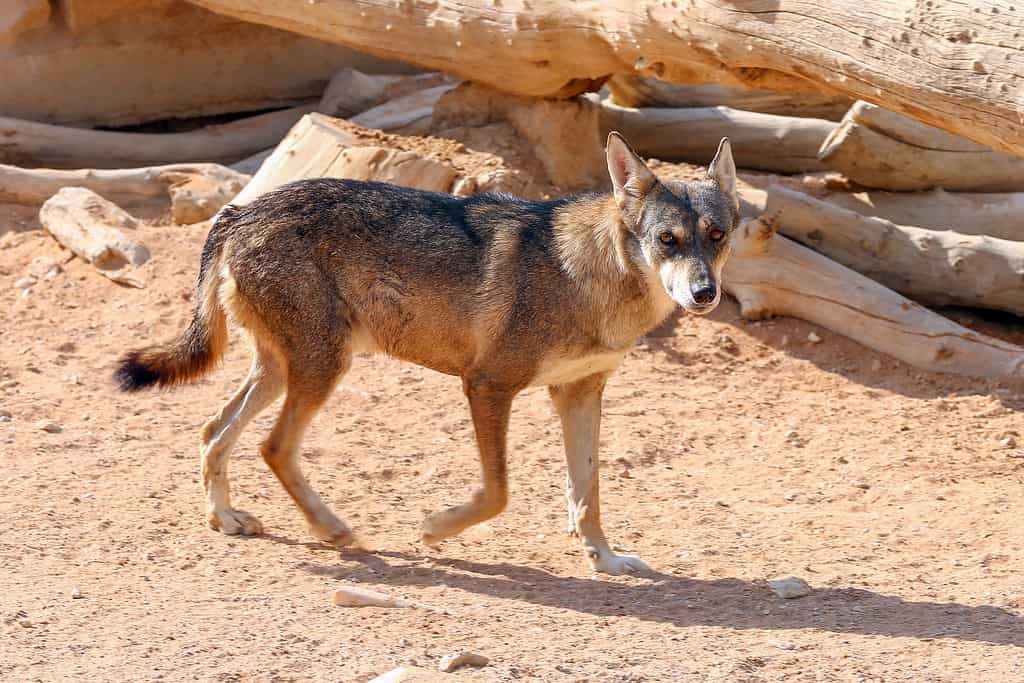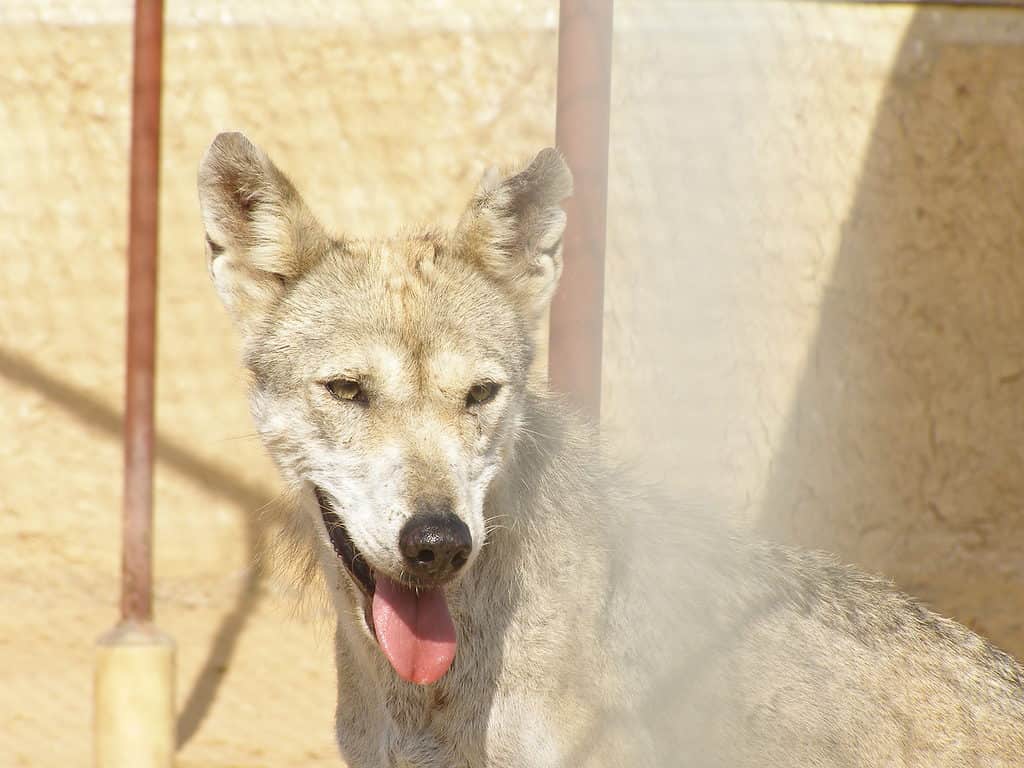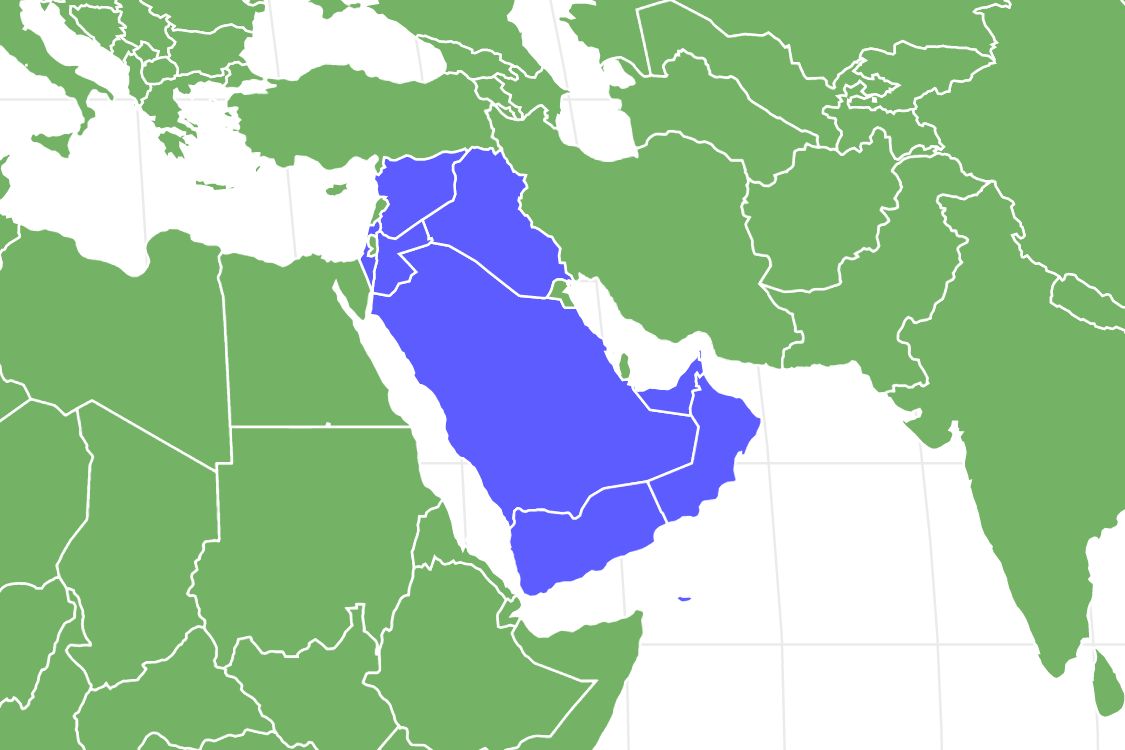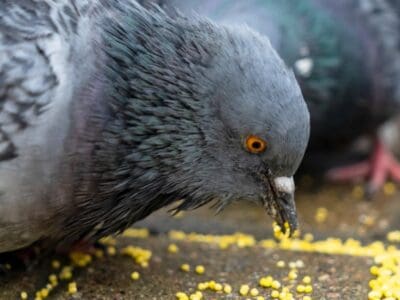Arabian Wolf
C. lupus arabs
They are the smallest wolf species
Advertisement
Arabian Wolf Scientific Classification
- Kingdom
- Animalia
- Phylum
- Chordata
- Class
- Mammalia
- Order
- Carnivora
- Family
- Canidae
- Genus
- Canis
- Scientific Name
- C. lupus arabs
Read our Complete Guide to Classification of Animals.
Arabian Wolf Conservation Status
Arabian Wolf Facts
- Prey
- hares, rodents, small ungulates, cats
- Name Of Young
- pup
- Group Behavior
- Pack
- Fun Fact
- They are the smallest wolf species
- Estimated Population Size
- 1000-3000
- Biggest Threat
- Urbanization
- Gestation Period
- 63-65 days
- Litter Size
- 1 to 15
- Habitat
- Arid deserts and mountains
- Diet
- Omnivore
- Lifestyle
- Pack
- Common Name
- Desert wolf
- Special Features
- fused toes
- Origin
- Arabian Peninsula
- Slogan
- Rare desert wolf
- Group
- pack
Arabian Wolf Physical Characteristics
- Color
- Grey
- Beige
- Skin Type
- Fur
- Top Speed
- 38 mph
- Lifespan
- 6 to 12 years
- Age of Weaning
- 6 to 8 weeks
- Aggression
- Medium
View all of the Arabian Wolf images!
The Arabian wolf, scientifically known as Canis lupus arabs, is a subspecies of gray wolf that is found solely in countries of the Arabian Peninsula today. It is one of the smaller subspecies of the grey wolf and is adapted to desert environments. While their size may vary from region to region, they remain significantly smaller than other species of wolves, even when fully grown. The reason for this is likely because a larger body requires more stamina and energy, and since they live in the desert, a more petite body is optimal.
5 Incredible Arabian Wolf Facts
- The Arabian wolf was one of the most widely distributed mammals, but today, they only roam around a third of their original range.
- They live in dry and hot climates, primarily deserts.
- Unlike most other wolf breeds, Arabian wolves will feed on human garbage and are omnivores.
- They live in small packs, unlike other wolf breeds, with an average size of only 3 members.
- These animals spend so much time on their own that they rarely howl.
- Arabian wolves are a common subject of Arabian folklore or folk songs.

The Arabian wolf (
Canis lupus arabs) is a smaller subspecies of the grey wolf, adapted to desert environments.
©Ahmad Qarmish12, CC BY-SA 4.0 <https://creativecommons.org/licenses/by-sa/4.0>, via Wikimedia Commons – License
Arabian Wolf Scientific Name
A sub-species of the Canis lupus, the Arabian wolf (Canis lupus arabs) was once thought to be the same species as the Indian wolf or C. l. Pallipes. And it was not until 1934 that British zoologist Reginald Innes Pocock identified this breed as a distinct sub-species. He considered that their skulls and overall size were smaller than the Indian wolf, and they were more similar to the Canis lupus wolf species than C. l. Pallipes. There remains some ambiguity in the taxonomic status of the sub-species in Israel and Palestine because as you head north on the Arabian Peninsula, the wolves end up with distinctly longer fur. In addition, interbreeding with feral dogs is also resulting in a transformation in this wolf species.
Arabian Wolf Appearance
The Arabian wolf is generally smaller than the average wolf. They are about 25-26 inches tall at the shoulder. As a result, Arabian wolves also weigh less than most wolves, weighing between 50-55 pounds. Its skull is also smaller than most wolves. According to Bergmann’s rule, this smaller size is to adapt to hotter, dry climates. The ears of the Arabian wolf are smaller when you compare them to its body proportions; they aid the animal in dispersing any body heat.
They are generally grey or beige, similar to most canines living in the Arabian peninsula. Their hair coat is thinner and less dense than most wolves, which helps them to dissipate heat from their bodies. Just like all other candids, these animals do not have any sweat glands despite living in hot environments, so they pant rapidly to allow liquid to evaporate from their lungs. This removes heat from inside their bodies. Arabian wolves have four toes, and the pads of their last two toes are often fused to the back of their feet, a trait initially found in African wild dogs.

The Arabian wolf is smaller than the average wolf weighing between 50-55 pounds.
©cpaulfell/Shutterstock.com
Arabian Wolf Behavior
Arabian wolves hunt in pairs and live in small packs of 3 to 4 wolves. In comparison, grey wolves hunt in packs of up to 15! This is because Arabian wolves live in the desert where there is much less prey, so the climate does not support large packs, and there is more competition when hunting.
The animal doesn’t generally howl unless under distress. Arabian wolves are territorial like all other wolves and often fight other males that enter their area.
Arabian Wolf Habitat
Arabian wolves live in the Arabian peninsula, which is surrounded by desert and mountains. Their bodies are very well adapted to the harsh climates of the Arabian peninsula, which can get as hot as 120 degrees Fahrenheit. This is why they have a small body and head that allows them to retain water and dissipate heat faster from their thin coat.
The Arabian wolves that live in the mountains have thicker and longer coats than those that live in the desert. Their paws are also fused, which is yet another desert adaptation.
Where is the Arabian Wolf Found?
- The Sinai Peninsula in Egypt
- Iraq
- Israel
- Jordan
- Oman
- Palestine
- Saudi Arabia
- Syria
- United Arab Emirates (almost extinct)
- Yemen
Arabian Wolf Diet
Arabian wolves are omnivorous creatures. However, their diet is primarily meat-based, making them mostly carnivorous. They feed on hares, rodents, small ungulates, cats, sweet fruits, roadkill, and other carrion. In addition, they are also known to eat human garbage when prey is scarce.
What eats the Arabian wolf?
Even though the Arabian wolf is small, they do not have any natural predators. In fact, they are one of the leading apex predators of Arabia, so few animals threaten them. However, the main threat to their survival is humans and interbreeding with other dog species.
What does the Arabian Wolf eat?
The Arabian wolf has a primarily carnivorous diet and can feed on several types of meat, several fruits and vegetables, and even human garbage when prey is hard to find. They typically feed on hares, rodents, small ungulates, cats, sweet fruits, roadkill, and other carrion. They are also known to kill goats and sheep on farms for food if they can find any. They can also hunt medium-sized animals such as gazelles or ibexes.
Arabian Wolf Predators and Threats
Arabian wolves do not have any direct predators in the desert environment. However, their population faces an alarming threat from humans in the urbanized environment that they live in. They also often breed with feral dogs, producing hybrid breeds that are half wolf and half dog, Which results in dogs that are larger in size and have a slightly wolf-like appearance.
Since these wolves also kill sheep and goats, farmers often don’t hesitate to shoot or poison them to protect their livestock. Another threat to this species was the epidemic of rabies that arose in Arabian wolves in Oman owing to the urbanized and unhygienic conditions they lived in. Thus, this species is currently on the brink of survival due to the increasing urbanization of the deserts in the Arabian peninsula. They are now considered critically endangered, with only 1000 to 3000 left in the world.
Arabian Wolf Reproduction
Unlike most wolves who breed in spring, the breeding season of the Arabian wolf begins in October and lasts until the end of December. Their gestation period is about 63-65 days, during which the mother keeps the pup in her womb. Generally, only 1-3 pups are born at once, but the largest known litter size is 12. However, this is very unusual. The species often give birth to just one young to enhance the chances of survival of the young and the mother in the harsh climate.

Arabian wolf (
Canis lupus arabs) mothers often give birth to just one young to enhance the chances of survival.
©Felagund, CC BY-SA 3.0 <http://creativecommons.org/licenses/by-sa/3.0/>, via Wikimedia Commons – License
Arabian Wolf Babies
Like all other wolves, the babes of the Arabian wolf are known as pups. They suckle to their mother for six to eight weeks after birth, after which they can feed on the same diet as their parents. The Arabian wolf pups are born blind and begin to see a few weeks after birth. And up until the sixth week after birth, they are well-guarded by both of their parents.
Arabian Wolf Lifespan
The average lifespan of an Arabian wolf is 6-8 years in the wild and 10-12 years if well-kept in captivity. As they get older, these wolves can suffer from several common ailments. The most common diseases include:
- Transferable canid diseases such as rabies.
- Viral diseases such as rabies, canine distemper, canine parvovirus, infectious canine hepatitis, papillomatosis, and canine coronavirus.
- Parasite infections can spread between any animals that the infected wolf comes in contact with.
- Bacterial diseases such as brucellosis, Lyme disease, leptospirosis, tularemia, and bovine tuberculosis are often caused by feeding on human garbage and can be lethal if left untreated.
Arabian Wolf Population
Since the Arabian wolf has now become quite rare and is only found in certain countries across the Arabian peninsula, their exact numbers in some countries are known. Overall, there are about 1000 to 3000 Arabian wolves left in the world.
In Oman, although there is now a ban in place on hunting these animals, less than 150 Arabian wolves remain. In Israel, there are about 100-150 Arabian wolves. In Syria, there are about 200 of these canines, while 300-600 are in Saudi Arabia. These animals are extinct in the wild in the UAE, with only a few left in captivity.
The population of Arabian wolves is on the decline and will continue to go down if this animal is not conserved and protected.
Similar Animals
- Fennec Fox: A desert-dwelling fox that is widespread across the Arabian peninsula and northern Africa. This species is well adapted to live in the desert and can get all of its water from its food.
- Dingo: An ancient breed of domesticated dogs that eventually became wild dogs in Australia.
- Arctic Wolf: One of the most adaptable and resilient creatures on earth. The Arctic wolf can survive in extremely harsh conditions in the far north reaches of the Arctic.
- Jackal: A very widespread candid that ranges from South Africa to Bulgaria. Jackals are small fox-like animals that typically roam grassy plains.
- Coyote: Coyotes are small candids that are only found in North America. They are very widespread, and despite the number of coyotes that are killed each year, their population is actually on the rise!
- African Wild Dog: A candid species similar to hyenas that are found across the African continent. They live in huge packs of up to 30 individuals and are known to be the most socials candids.
Arabian Wolf FAQs (Frequently Asked Questions)
Are Arabian wolves carnivores, herbivores, or omnivores?
Arabian wolves are omnivorous animals. While their diet is largely based on meat, they also eat vegetables and even human garbage when needed.
Is the Arabian wolf nearly extinct?
Unfortunately yes. This sub-species is already almost extinct in remote areas of Oman, Yemen, and Saudi Arabia. Only about 1000 to 3000 Arabian wolves are left in the world, and the animal is critically endangered.
How many Arabian wolves are left in the world?
There are about 1000-3000 individual Arabian wolves left in the world.
What is the main cause of the decrease in the Arabian wolf population?
The main cause of the decline in the Arabian wolf population is urbanization, hunting, and unclean conditions that cause diseases like rabies to spread.
Do Arabian wolves howl?
No, Arabian wolves do not howl as they tend to live in small packs.
Where can you find an Arabian wolf?
You can find Arabian wolves throughout the Arabian peninsula in countries like Israel, Oman, and Saudi Arabia.
Thank you for reading! Have some feedback for us? Contact the AZ Animals editorial team.
Sources
- The Wolf Intelligencer, Available here: https://thewolfintelligencer.com/arabian-wolf-canis-lupus-arabs/
- UKWCT, Available here: https://ukwct.org.uk/files/education/WP_Ed38_Arabian-Wolf.pdf
- Arabian Rock Art Heritage, Available here: http://saudi-archaeology.com/subjects/arabian-wolf/
- Animals Fandom, Available here: https://animals.fandom.com/wiki/Arabian_Wolf
- Al Ain Zoo, Available here: https://www.alainzoo.ae/explore-zoo/animals/mammals/arabian-wolf
- All Things Nature, Available here: https://www.allthingsnature.org/what-is-the-arabian-wolf.htm
- The Predator Hunter, Available here: https://thepredatorhunter.com/arabian-wolf-facts-about-the-amazing-desert-wolf/
- Arab News, Available here: https://www.arabnews.com/node/396274


















